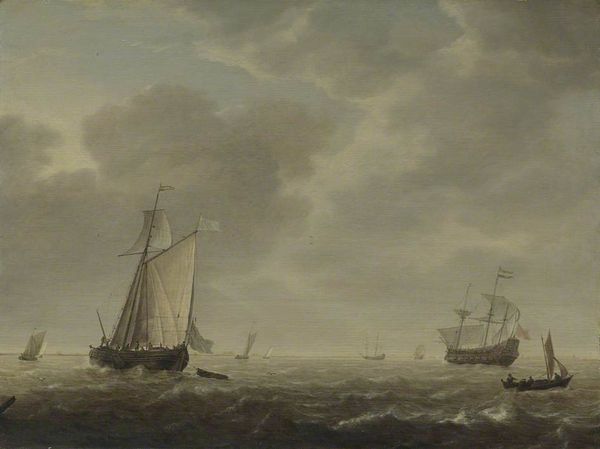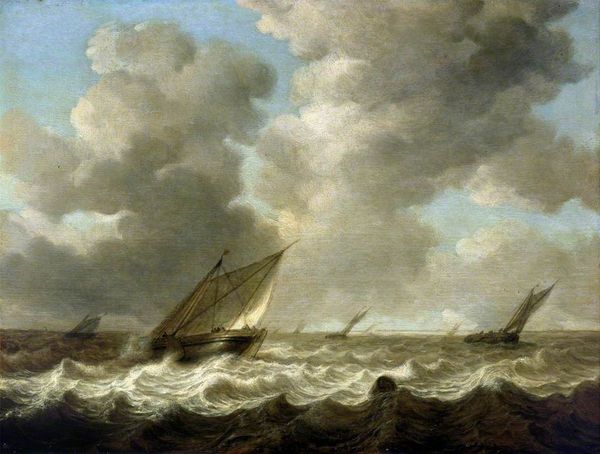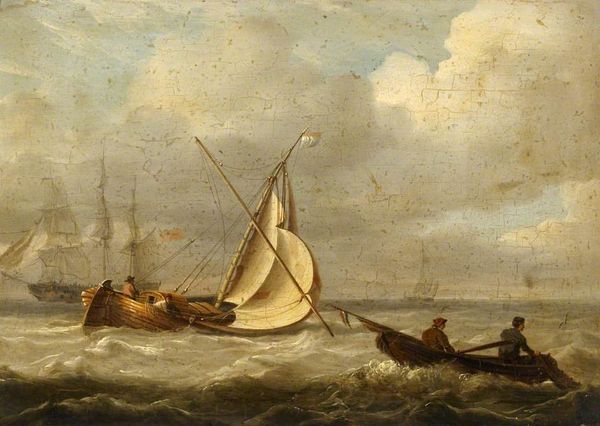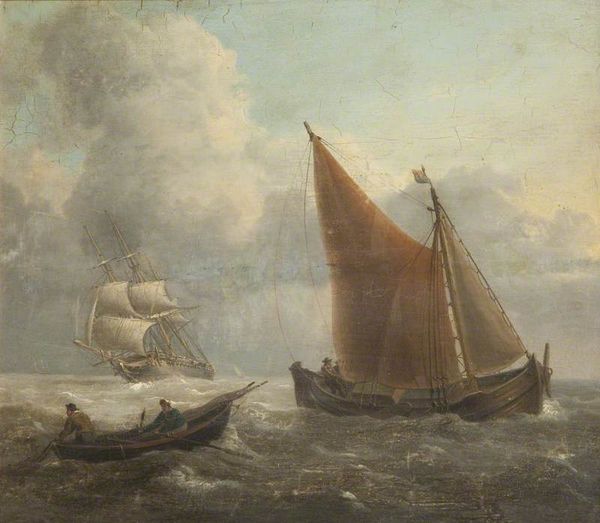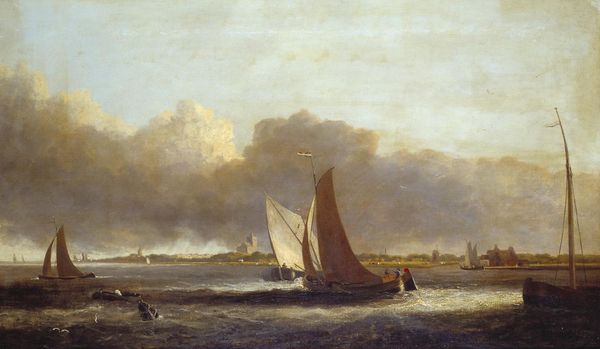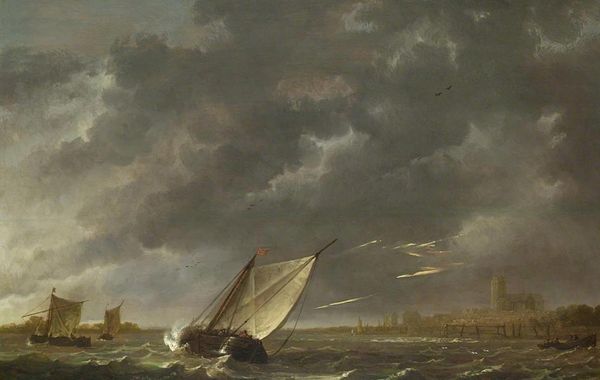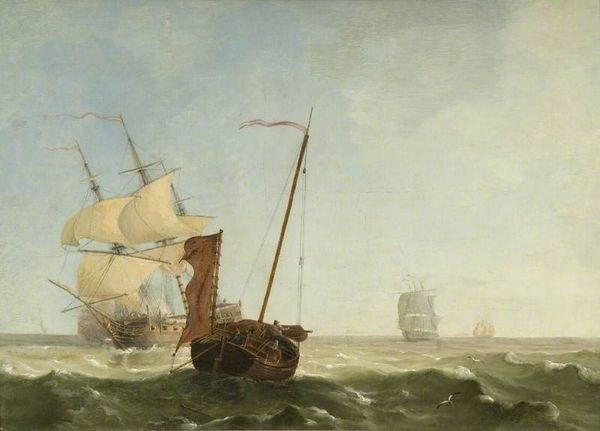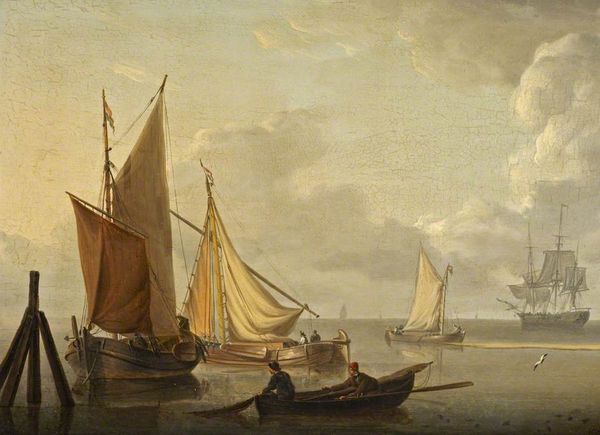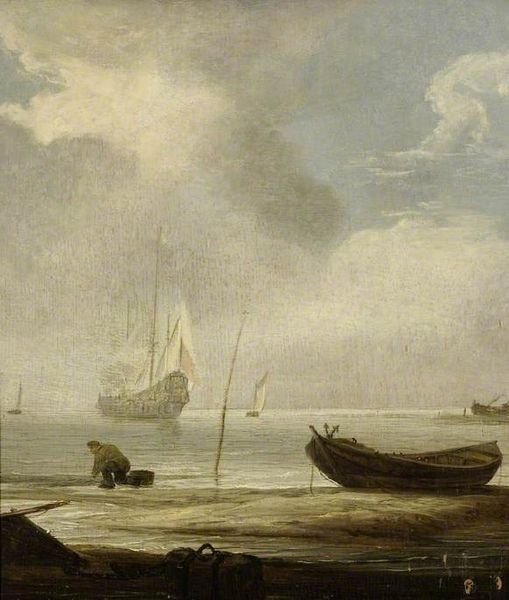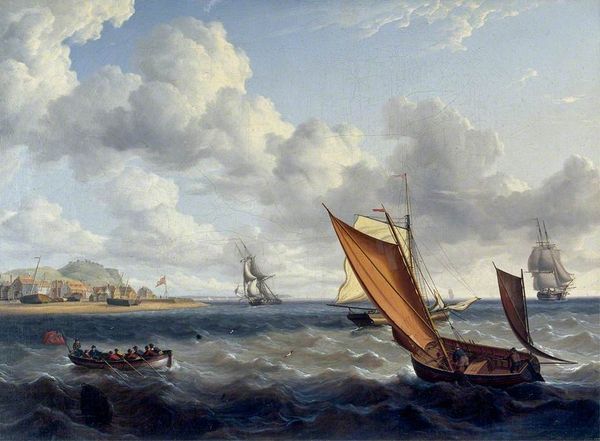
painting, oil-paint
#
sky
#
baroque
#
dutch-golden-age
#
ship
#
painting
#
oil-paint
#
vehicle
#
landscape
#
water
#
cityscape
Copyright: Public domain
Curator: Let’s discuss “A Squally Day in a Dutch Estuary,” a painting created in 1645 by Simon de Vlieger, rendered in oil paint. The composition captures a scene of ships navigating turbulent waters beneath a stormy sky. What strikes you about it at first glance? Editor: Well, I'm immediately drawn into the drama of that sky, honestly. The whole painting feels…unsettled, like a pregnant pause before a storm truly breaks. I can almost smell the salt in the air. Curator: De Vlieger was masterful at depicting atmospheric conditions. One should consider that the Dutch Golden Age was inextricably tied to maritime power. Paintings of the sea and ships held great symbolic weight, reflecting both prosperity and the constant threat posed by the elements. Notice how he balances a concern for naturalism with artistic license to create a visual experience which prioritizes narrative and drama. Editor: Absolutely! You can almost feel the grit in those rough brushstrokes capturing the chop of the water, or sense the back-breaking labor on board of the depicted vessels. And yet, even amid this "squall," there's something profoundly comforting, isn't there? The distant cityscape is a soft reminder that civilization endures. Curator: And let's consider the specific choices of materials. Oil paint afforded de Vlieger a richness of color and texture that allowed him to blend tones with remarkable subtlety. Pigments, many sourced from distant lands thanks to the shipping lanes depicted here, became signifiers of Dutch mercantile power in and of themselves. The very stuff that composes the art work has meaning here. Editor: I love that. The very materiality echoing the content. It does lead one to consider the position of the artists who rely on the sea for their source, income, and success. The work becomes like an altar piece, of sorts, to the success and pain the water could bring to its surrounding lands. Curator: Precisely. So when viewing de Vlieger’s canvas it becomes apparent that he offers a subtle blend of reality and artistic interpretation. Editor: Looking closer, there’s also a sense of sublime perspective. How vulnerable those tiny figures seem against the immensity of the ocean and the sky. I keep thinking about what this painting might have meant to the people of the time. I have learned a lot about De Vlieger and this world from a fresh viewpoint, thank you. Curator: It’s important for us to think critically about both artistry, society and material history of works like these.
Comments
No comments
Be the first to comment and join the conversation on the ultimate creative platform.
